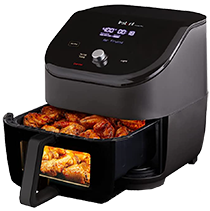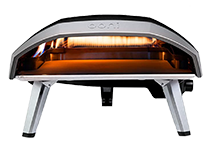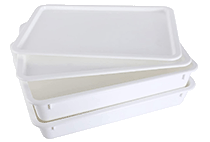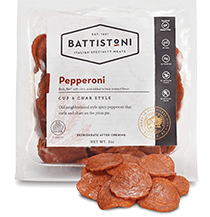Questions About Homemade Pizza
We have divided the questions about homemade pizza into five categories dough, cheese, sauce, toppings, and baking. We have answered these using some of our own experiences making homemade pizza, and we also consulted expert pizzaiolos through their websites and books to see their answers.
Table of Contents

Learning how to do anything takes some research, time, and of course, experience. The best way to get that experience is through trial and error. You learn the best way to do anything, and making homemade pizza is no exception.
Our goal is to answer common questions about homemade pizza, and hopefully, you can learn from our mistakes (even some homemade pizza sins we’ve committed) and what we have learned over the years about perfecting the craft of making homemade pizza. Because if you’re going to do something you should do it well.
After all is said and done, we probably never really stop having questions about homemade pizza, like why is pizza sometimes called pie?
Questions About Homemade Pizza Dough
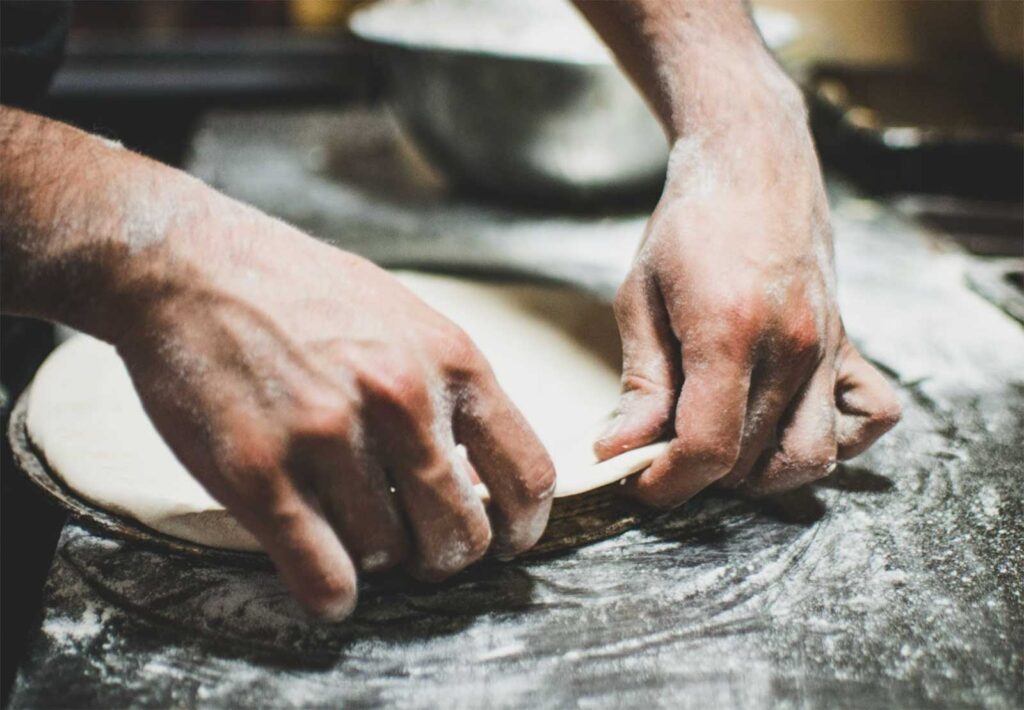
What flour is the best for pizza dough?
You can make pizza with bread flour or all-purpose flour. Bread flour is the best option because it has a higher protein content which means when it’s mixed with water, it has more gluten in the dough. Gluten is what makes the dough stretchy and gives it a chewier crust.
But if you don’t have bread flour, you can use all-purpose, it just won’t be as stretchy, and you will need to use more water.
Italian pizzaiolos use 00 flour, a high gluten flour that is very finely ground. There is some debate on whether or not it’s the best. We have used all three; bread flour works great, and since 00 flour isn’t available everywhere, bread flour works the best.
Should I use dry or fresh yeast for my dough?
Fresh yeast has a distinct flavor similar but not as intense as sourdough. Dried yeast doesn’t have that same intensity. Fresh yeast, sometimes called cake yeast because it is sold in cake form, is perishable and only lasts a week or two.
For the home chef, a container of fresh yeast is a lot to use before it goes bad. However, a busy pizzeria may use fresh to create a special taste because they are constantly making pies.
Dried yeast is easier to work with and has a longer shelf life, so most home pizzaiolos would agree that dried is best to use when making pizza. But like anything, it comes down to preference.
We think you should try both and see which you prefer. If you buy a block of fresh yeast, you can always freeze it to extend the shelf life. Read more about the difference between active dry yeast and instant dry yeast.
Why doesn’t my yeast get foamy and rise?
There are a few possible reasons. The yeast may be too old. You may have used water that was too hot which kills the yeast. Or the water you are using has too much chlorine or other things in it that inhibit yeast growth.
What to do if the dough tears when stretching?
If the dough tears, it may not be ready to stretch or too dry. Roll it again, cover with a layer of olive oil and let rest/rise again.
What should I do when the dough is too wet or sticky?
You can add more flour a sprinkle at a time and knead it more. Then let it rest again. The dough will be a little sticky, but it shouldn’t stick to your hands in big globs. It should just be a little tacky to the touch.
Can I use a rolling pin, or is that cheating?
Professional pizzaiolos are experts in stretchy and throwing dough, and the more you practice, you will be able to. But there is no shame in using a rolling pin as you learn about the best way to stretch your dough.
A rolling pin can help you get an even stretch, so the dough isn’t too thick or thin, which will cause it to cook unevenly. Just make sure the rolling pin has enough flour, so it doesn’t stick when you roll it out.
Can I freeze pizza dough?
Yes, you can absolutely freeze the dough. We sometimes make big batches and freeze some of the dough to have on those days you want to make pizza but don’t have time.
It’s best to freeze the dough after it has risen at least once. Freeze in a floured Ziplock or reusable freezer bag for one month. Remove it from the freezer when ready to use, let it thaw, and then stretch it out.
Questions About Homemade Pizza Cheese
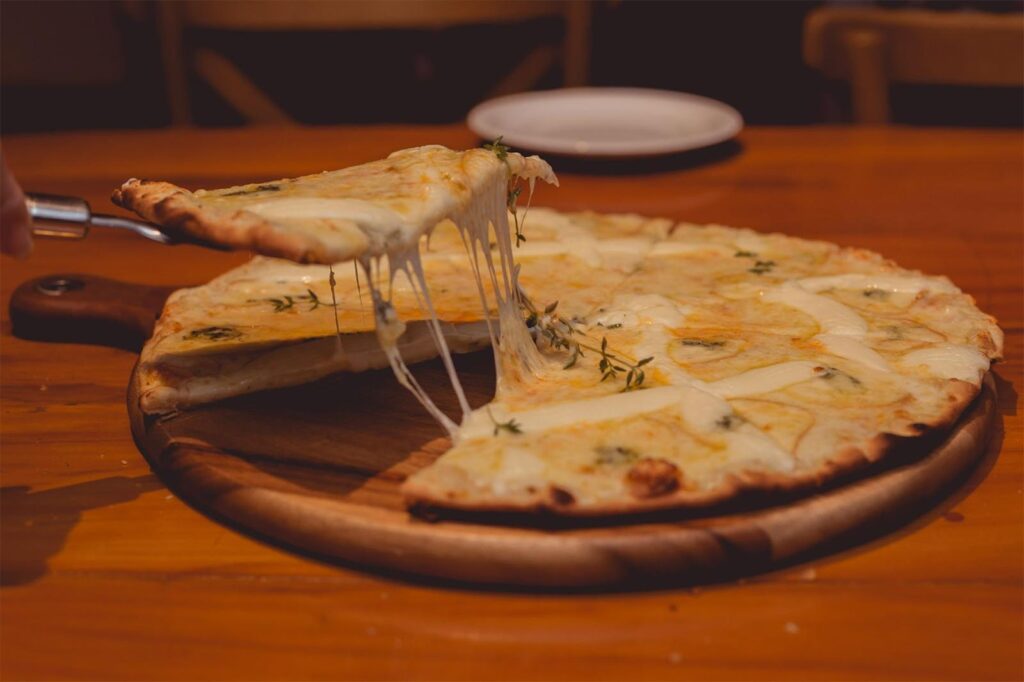
Should I use Parmegiano Reggiano on pizza?
We love Parmegiano Reggiano for its nutty flavor and creamy texture, but it’s an expensive cheese to grate on pizza. A better choice is Grana Padano which is similar to Parmesan Reggiano but is more affordable and is perfect for grating.
It also comes from the same region in Italy, the Po valley. In chef Daniel Holzman’s book, Food IQ, he refers to Grana Padano as Parmesan Reggiano’s little brother.
Do you have to use mozzarella?
While pizza is typically made with mozzarella, you can use anything you want as long as it melts well. In Mexico and Latin America, it’s not uncommon to use Manchego, the French often use blue cheese on their pizzas, and we’ve seen pizzas in the southern states of the U.S. use cheddar.
You can experiment with what you have on hand and what you like.
How to make a pizza without cheese?
Cheeseless pizza is fairly new, but it’s gaining popularity for those with dietary conditions or even some vegans. You can use cashew cheese or try some of the non-dairy shreds available in most supermarkets. Nutritional yeast is a common product that has a nutty, cheesy taste. Or you could skip the cheese and go veggie-heavy.
What’s the difference between fresh mozzarella and packaged?
Fresh mozzarella is a soft, high, moisture cheese stored in whey or brine. And packaged mozzarella that you find in any grocery store is a low moisture mozzarella with a much longer shelf life.
Both are great on pizza, but low moisture shreds better, and fresh mozzarella needs to be sliced. You can easily make homemade mozzarella if it’s not available near you.
Questions About Homemade Pizza Sauce
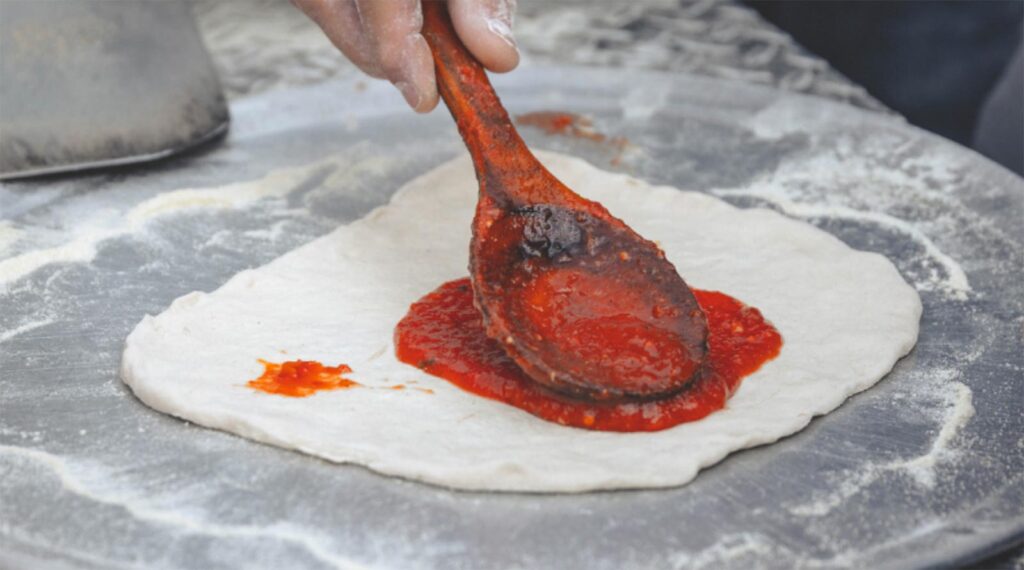
How long should you cook pizza sauce?
There are two schools of thought on pizza sauce. One is that pizza sauce should never be cooked. Just blend canned tomatoes with spices for a fresh, zingy flavorful sauce.
On the contrary, cooked sauce develops a deeper robust flavor and is an excellent base for any style of pizza. The sauce doesn’t take away from the other flavors. It really is a preference, though. Try both and see which you like better.
Is homemade pizza sauce really worth it?
We think it is really worth it. The great thing about a homemade sauce is you can make it and freeze it. We make a batch and then freeze it in reusable freezer bags, so when we want to make pizza, we already have homemade sauce and can focus on the dough and toppings.
Should I use fresh tomatoes or canned?
According to the experts, canned tomatoes are best for making pizza sauce. Fresh tomatoes are fine when in season, but they are often too watery, and the flavor is inconsistent.
Our favorite canned tomatoes are Di Napoli from one of our favorite pizzaiolos, Chris Bianco. We learned a lot from his book Bianco about using the right ingredients.
Questions About Homemade Pizza Toppings

How to make a vegetarian pizza that still tastes good?
This is a loaded question, and tastes are different. We enjoy vegetarian pizzas just as much as meaty ones. We think the trick to making a good vegetarian pizza is finding the right toppings that complement each other without overdoing it. And, of course, using the best toppings you can find.
We love artichokes, sun-dried tomatoes, peppers, mushrooms, olives, arugula, pineapple, zucchini, eggplant, to name a few. However, mixing and matching the toppings will make a better pizza than just overloading it with every vegetable.
Cheese is also a factor. Vegetarian pizzas are a great place to try different cheeses to intensify the flavor. Cheese like smoked gouda, blue cheese, feta, fontina, and manchego are excellent additions to a vegetarian pizza.
Do sausage and shrimp need to be precooked, or do they cook on the pizza?
Always precook meats and seafood before adding them to the pizza. Pizzas cook quickly, and uncooked meats or seafood won’t have enough time to cook thoroughly. Smoked and cured meats do not need to be precooked.
How do I keep the wet toppings from making my pizza soggy?
Wet toppings like pineapple, artichokes, sun-dried tomatoes need to be placed on a paper towel to blot excess liquid or oil before cooking your pizza.
Is it ok to put seafood on pizza?
Yes, just make sure it’s cooked. If adding frozen shrimp and blot excess liquid on a paper towel. Tinned fish like anchovies, sardines, and smoked oysters are excellent additions to pizza.
Is it wrong to put pineapple on pizza?
If it’s wrong, we don’t ever want to be right. Of course, pineapple on pizza is fine. Don’t listen to the haters. Pineapple works with other toppings, too, not just Canadian bacon. And actually, we still disagree about pineapple on pizza sometimes.
Questions About Homemade Pizza Baking Techniques
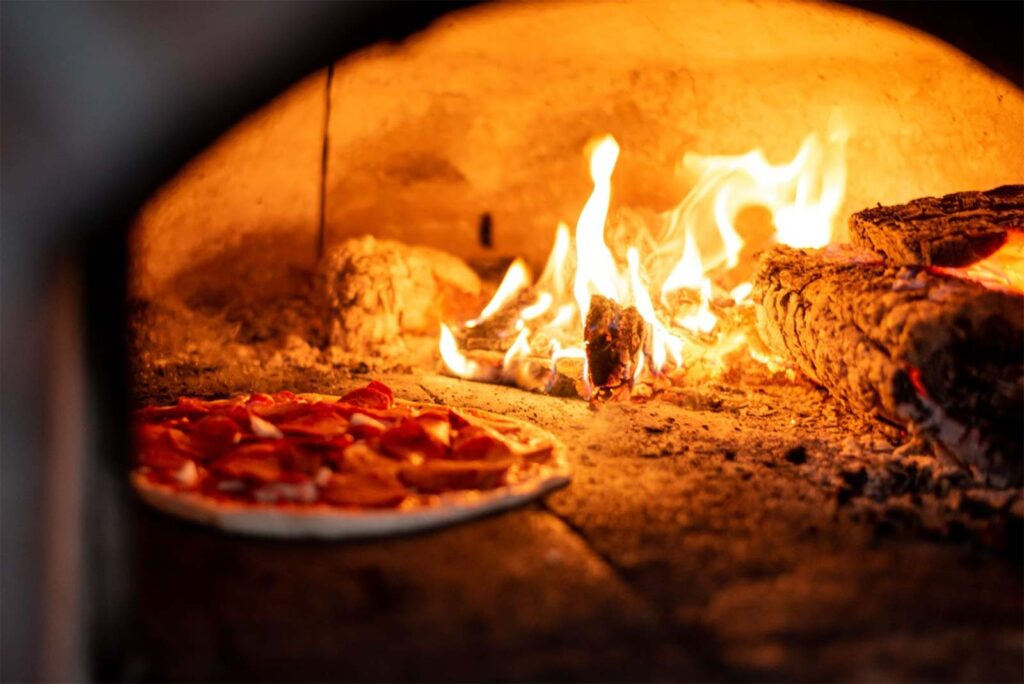
Can I bake two pizzas, one right above the other, in my conventional oven?
Technically, yes, you can do that, but they will come out differently. The bottom pizza will cook much faster and have a crispier texture than the one on top.
Ideally, you should cook pizzas one at a time for the best results. However, if you are in a time crunch and have a big enough oven side by side is the best option.
Can I bake my pizza on cardboard?
When baking a frozen pizza, always remove the cardboard before cooking. The exception is if you are baking a fresh-made pizza from a take and bake establishment, those come in a tray that they are meant to be baked on.
Is the crust exactly the same if I bake it without any sauce or toppings?
The crust bakes quickly, so if you have an empty crust, it will bake quicker than if the pizza has sauce and toppings.
How to keep pizza from sticking to the pan?
We like to sprinkle cornmeal on the pan before placing the stretched out dough to make the pizza. Cornmeal and semolina keep the pizza from sticking, and it won’t necessarily affect the taste of the crust.
Never use flour because it becomes gummy, and while your pizza won’t stick, you don’t want a mouthful of cooked flour on the bottom of your pizza.
How to save a stuck pizza?
This is one of the most common questions about homemade pizza. Many home pizza chefs have had this happen at least once. If your pizza does stick to the pan, try sliding a knife under it to jiggle it loose. Once the stuck spot is loose you can use a spatula to remove the whole pizza.
Is a pizza stone necessary?
It’s not necessary, but if you make pizza regularly like we do, it’s a good investment. Pizza stones heat the pizza evenly and cut down on baking time. And you need to note how to season a pizza stone.
To par-bake or not to par-bake?
If you are using a pizza stone, it par-bakes the pizza for you because you preheat the stone before adding the pizza. If you are not using a stone, you should par-bake your crust with some olive oil.
Just brush olive oil on the crust and bake for three to four minutes. Then, remove the crust and add your sauce and toppings.
What’s the best way to reheat leftover pizza?
After trying all of the ways to reheat pizza, including microwave, air fryer, oven, and skillet, we found the one we think is the best. For us, the best is in an uncovered skillet on the stove.
Heat the skillet, and as the cheese starts to get greasy, add a few drops of water to steam it. Then, cover and cook for another three minutes. This is ideal if you have a cast-iron pan but will still work with a regular skillet.
Did we answer all of your questions about homemade pizza? Are there any that we didn’t get to? We hope this helps you on your journey to perfect your pizza-making skills.

